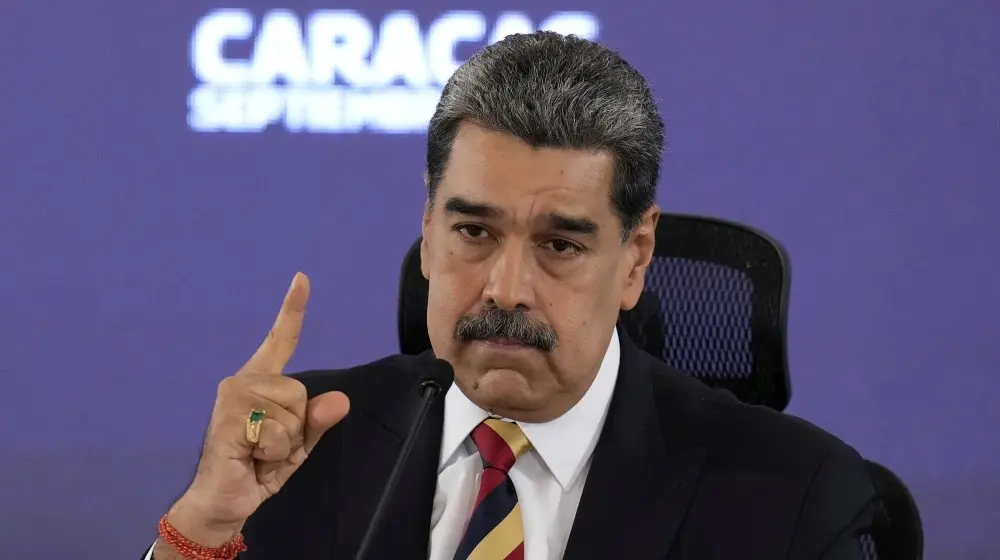
Venezuela deploys missiles, warships, and 3.7 million troops amid rising U.S. tensions. Global reactions intensify as fears of regional conflict grow.
Why Venezuela’s Massive Military Deployment Is Shaking Global Security
Venezuela’s Largest Military Mobilization in History
On October 2, 2025, Venezuelan President Nicolás Maduro declared a national emergency and ordered the deployment of missiles, warships, and 3.7 million troops in response to what he described as “aggressive U.S. military movements” in the Caribbean. The mobilization includes anti-ship missile systems, submarines, fighter jets, and a vast network of militia forces activated across the country.
The move follows reports of U.S. destroyers, F-35 squadrons, and a nuclear-powered submarine entering waters near Venezuela. Maduro stated that any violation of Venezuelan territory would be considered “an act of war against Latin America.”
Defense Minister Vladimir Padrino López confirmed the deployment of drones and naval patrols along the coastline, with larger vessels stationed further north in territorial waters. The government also submitted a formal complaint to the United Nations, accusing the U.S. of destabilizing the region.
U.S. Strategy and Regional Tensions
The U.S. has cited concerns over drug trafficking and transnational criminal networks as the reason for its increased naval presence. President Donald Trump’s administration has accused Maduro of leading the Cartel de los Soles, a designated terrorist organization, and recently doubled the bounty for his capture to $50 million.
Washington’s deployment of guided-missile destroyers and Marines is part of a broader anti-cartel strategy. However, analysts warn that the military buildup risks escalating into a direct confrontation. The presence of a U.S. nuclear submarine near Venezuelan waters has been labeled a “grave threat” by Caracas.
Despite the dramatic mobilization, some experts believe the U.S. is using pressure tactics to force negotiations rather than preparing for invasion. Still, the situation remains volatile, with both sides refusing to back down.
Inside Venezuela: Civilian Response and Militia Surge
In Caracas and other cities, thousands of civilians—including retirees, students, and civil servants—lined up to join Venezuela’s militia forces. Maduro’s call to arms was met with patriotic fervor, as citizens pledged to defend their homeland against foreign aggression.
State media aired footage of training drills, missile launches, and naval exercises. The government has also militarized key infrastructure, including ports, airports, and oil facilities, to prepare for potential conflict.
Opposition leaders have criticized the move as a distraction from domestic issues, including inflation, food shortages, and political repression. However, Maduro maintains that national unity is essential in the face of external threats.
Global Reactions and Diplomatic Fallout
International reactions have been mixed. Russia and Iran expressed support for Venezuela’s right to self-defense, while European leaders urged restraint and dialogue. The United Nations has called for de-escalation and respect for international law.
Latin American neighbors, including Colombia and Brazil, have increased border surveillance and warned against any spillover of conflict. The Organization of American States (OAS) is expected to hold an emergency session to address the crisis.
China, Venezuela’s key economic partner, has remained neutral but called for peaceful resolution. Meanwhile, global oil markets have reacted nervously, with prices rising amid fears of supply disruption.
Conclusion: A Flashpoint with Global Consequences
Venezuela’s military deployment marks one of the most serious escalations in the region in recent years. With 3.7 million troops on alert and missiles aimed at the Caribbean, the situation demands urgent diplomatic engagement.
Whether this standoff leads to negotiation or conflict depends on the actions of both Washington and Caracas. For now, the world watches as two nations test the limits of power, sovereignty, and diplomacy.
Also read:
- How Su-57 Jets and Kinzhal Missiles May Revolutionize India’s Military Strategy
- Sky Standoff: Venezuela Sends Fighter Jets Over US Warship as Tensions Explode
Stay informed with global defence and geopolitical updates—only on Rapido Updates.